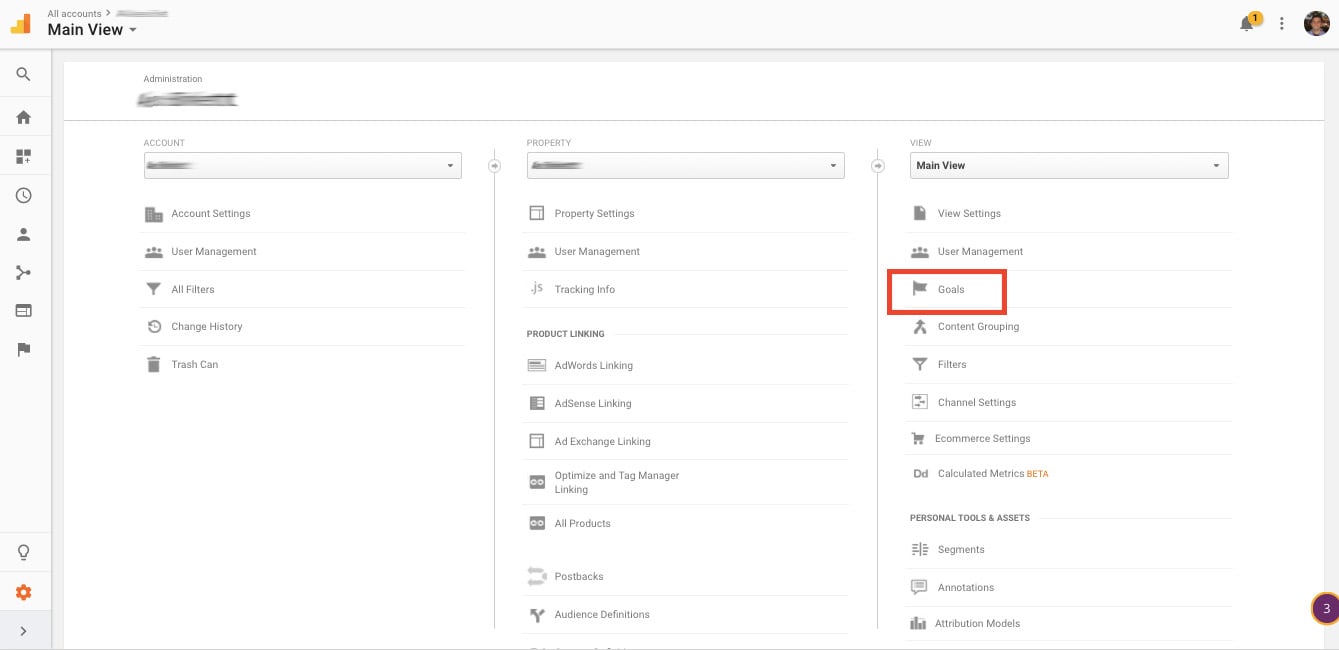Introducing the Blind Spots: Recognizing What Google Analytics Goals Can not Determine
In the realm of digital analytics, Google Analytics stands as an effective tool for tracking and analyzing online user interactions. Nevertheless, in the middle of its robust capacities, there exist blind places that commonly escape measurement. Recognizing what Google Analytics objectives can not determine is essential for obtaining a detailed view of customer behavior and engagement. As we dive right into the intricacies of these unseen areas, we reveal a complex web of undiscovered regions that hold useful understandings right into user actions and inspirations, tough traditional wisdom and shedding light on the limitations of our data-driven understanding.
Individual Habits on External Platforms
Comprehending how individuals connect on outside systems is vital for optimizing on-line methods. External platforms, such as social media sites networks, referral websites, and online discussion forums, play a substantial role in driving website traffic to a business's site. By examining customer behavior on these systems, organizations can obtain important understandings right into the efficiency of their advertising initiatives and the choices of their target market.
One key facet of customer habits on external systems is the reference resource. By tracking where the customers are coming from, companies can recognize which systems are driving the most traffic to their internet site. This information can aid business designate their sources much more efficiently, focusing on the platforms that generate the most effective outcomes.

Offline Interactions and conversions
Analyzing user habits on outside systems gives useful understandings into on-line methods; nevertheless, thinking about offline conversions and interactions is similarly imperative for an extensive understanding of a firm's general efficiency. While Google Analytics succeeds at tracking on-line interactions, it falls brief in recording the complete client trip that often includes offline touchpoints. Offline conversions, such as in-store acquisitions or phone queries, play a substantial duty in several organizations' success. Ignoring these communications can cause a distorted sight of the effectiveness of advertising and marketing campaigns and total organization efficiency.

Acknowledgment Beyond Last Click
When delving right into the realm of digital advertising and marketing analytics, it comes to be vital to look past the solitary touchpoint of the last click for a more extensive understanding of acknowledgment. While Google Analytics supplies valuable understandings into individual actions, counting only on last-click attribution can be limiting - what data is google analytics goals unable to track. Attribution versions that go beyond the last click provide a much more nuanced sight of the consumer trip, taking into consideration all the touchpoints that lead to a conversion
Acknowledgment past the last click allows marketing experts to assign credit history to numerous communications along the conversion course, providing a clearer picture of the efficiency of different marketing channels. By exploring multi-touch attribution designs such as straight, time decay, or position-based attribution, organizations can much better designate their marketing budgets and maximize their approaches for optimal impact.
Recognizing the influence of each touchpoint in the conversion process is crucial for making informed decisions and optimizing ROI. By accepting attribution beyond the last click, organizations can gain deeper understandings right into Discover More consumer habits and tailor their marketing efforts better.
Cross-Device and Cross-Browser Monitoring

In a similar way, cross-browser monitoring complements cross-device monitoring by capturing user behavior as they switch over between various internet browsers. Recognizing just how users engage with sites on various internet browsers can assist marketing experts maximize their on the internet experiences to ensure consistency and functionality across different platforms.
Qualitative Information and Individual Intent
Comprehending customer intent with qualitative data analysis is crucial for creating targeted digital marketing approaches that reverberate with the needs and preferences of the target audience. Qualitative information supplies understandings right into the 'why' behind user actions, shedding light on inspirations, emotions, and choices that measurable data alone can not catch. By evaluating individual comments, remarks, and communications, marketing experts can discover valuable info concerning user intent, allowing them to tailor their messaging, web content, and offerings to much better straighten with what their target market is seeking.
Qualitative information additionally aids in understanding the context in which customers involve with a site or app. This contextual understanding enables marketing experts to produce more appropriate and personalized experiences, eventually driving greater interaction and conversion prices. By check that diving right into individual intent with qualitative data analysis, services can get a deeper understanding of their target audience, causing much more reliable advertising approaches that fulfill users' demands and assumptions.
Conclusion
Finally, Google Analytics objectives have limitations in gauging customer actions on external systems, offline conversions, acknowledgment past last click, cross-device and cross-browser monitoring, and qualitative information connected to customer intent. what data is google analytics goals unable to track. It is essential for organizations to be familiar with these dead spots in order to supplement their information analysis with various other devices and approaches to acquire an extra thorough understanding of their target market and boost their overall electronic marketing methods
By analyzing user actions on these platforms, services can get useful understandings right into the efficiency of their marketing initiatives and the choices of their target audience.
Examining user behavior on exterior systems provides valuable insights into on-line approaches; however, considering offline conversions and communications is similarly vital for a comprehensive understanding of a business's total efficiency.In digital marketing analytics, moving beyond last-click attribution to explore cross-device and cross-browser tracking is important for getting a holistic understanding of customer interactions throughout various platforms and devices. By examining user comments, comments, and communications, online marketers can uncover valuable information about user intent, enabling them to tailor their messaging, web content, and offerings to much better straighten with what their audience is seeking.
By delving into user intent with qualitative data evaluation, services can gain a much deeper understanding of their target audience, leading to a lot more efficient marketing approaches that fulfill users' expectations and needs.